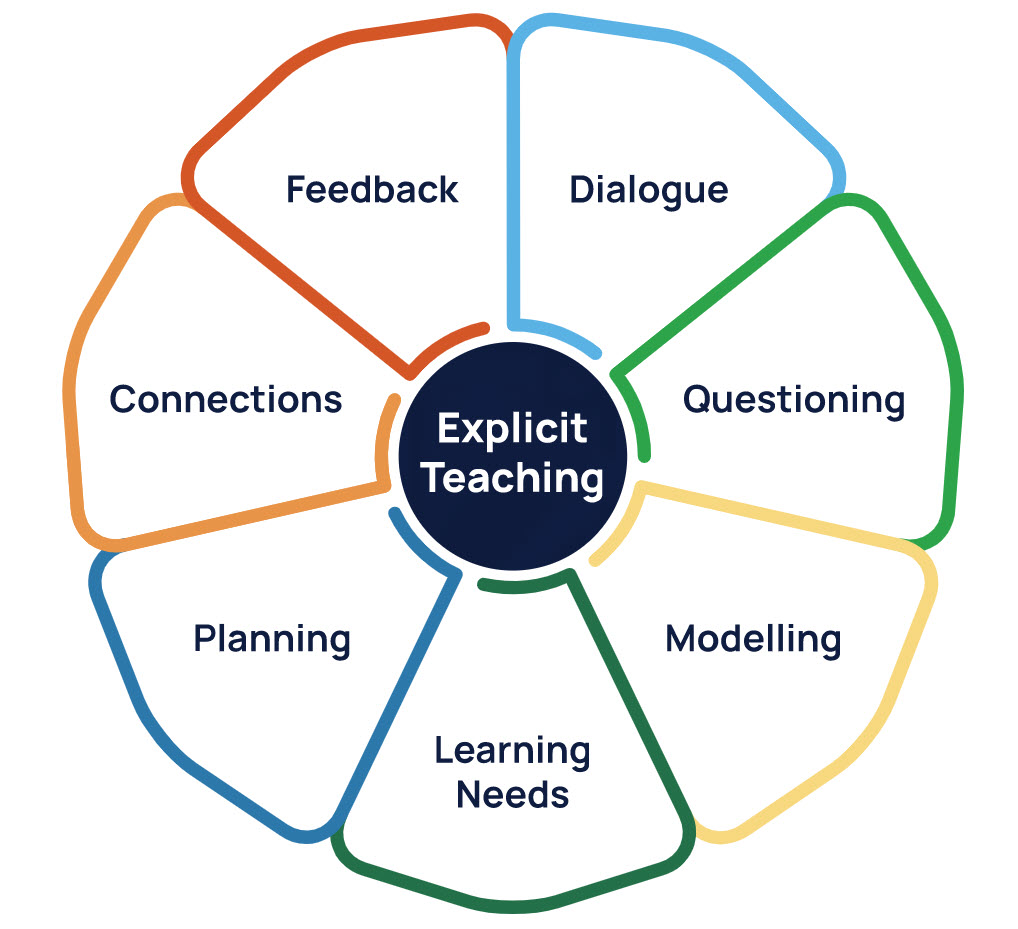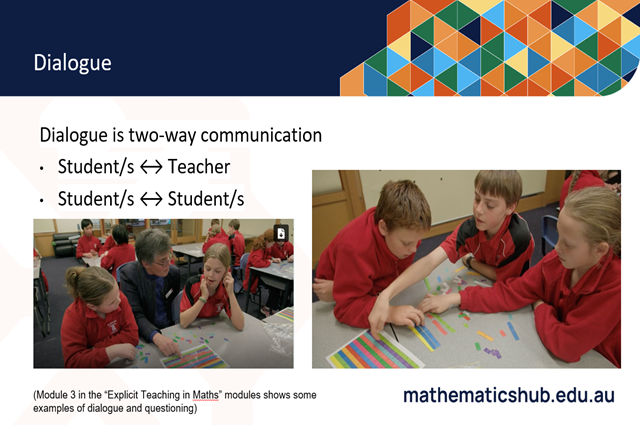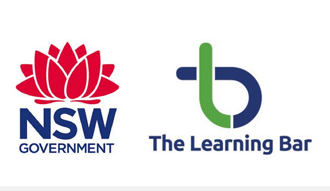Explicit teaching
Overview
Explicit teaching is about making learning intentions and success criteria clear, with the teacher using examples when working though problems, setting relevant learning tasks, checking student understanding and providing feedback.
Watch this video to see some strategies for teachers to use to make their teaching explicit.
Explicit teaching includes seven key components that enable teachers to guide the learning process. These components include:
- purposeful planning that identifies learning outcomes and success criteria
- consideration of all students’ learning needs when planning
- explicit modelling of reasoning and processes behind actions
- teacher and student questioning that targets explicit concepts and processes
- classroom dialogue focused on making mathematical ideas explicit
- feedback that is specific and clearly actionable
- making explicit the connections between related mathematical topics and their applications.
When teachers adopt explicit teaching practices, they ensure students know what to do and why. The teacher plans the learning intentions and success criteria, makes them clear to students, and ensures they are modelled. By the end of the learning sequence, student understanding is validated and planned mathematical connections are established.
To learn more about Explicit Teaching register for free online self-paced modules.
The teacher:
- considers all students’ learning needs when planning
- establishes deliberate learning goals and success criteria that target explicit mathematical concepts and strategies
- anticipates student responses and scaffolds learning, modifying teaching practices as necessary
- when explicitly modelling how to solve a mathematical problem, provides students with clear and concise descriptions and demonstrates key ideas, strategies and skills.
- poses a variety of well-constructed questions in different ways, including open-ended, clarifying, scaffolding, probing and leading
- encourages students to construct knowledge socially and engage in classroom dialogue with a focus on making mathematical ideas explicit
- provides feedback to students that explicitly informs them about their strengths and understandings, or their errors and misunderstandings on a particular topic
- explicitly draws students' attention back to key mathematical ideas that underpin the learning intentions and success criteria of a lesson.
The students:
- know the intention or purpose of the lesson
- have their individual learning needs met
- engage in class discussion around mathematical ideas and concepts to share and exchange ideas
- respond to different question types using their mathematical understanding and provide their reasoning
- engage in maths learning experiences, individually and collaborating with others
- represent their mathematical understanding
- receive feedback from the teacher
- know when they have achieved the lesson goal – and feel success.
Professional learning

Explicit Teaching in Maths professional learning modules
These free online professional learning modules focus on explicit teaching. Explicit teaching is an effective strategy used to enhance students' learning of mathematics

Podcast series: Strategies for explicit teaching
Listen to this free podcast series that focuses on explicit teaching. Select from a range of topics that cover all aspects of the principles of explicit teaching.

View our webinar series that focuses on the principles of explicit teaching. Select from a range of topics to help make your maths teaching explicit.

Explicit teaching practices and feedback
This resource provides an overview of this effective classroom practice with supporting resources and an evidence base.
Example of the strategy in action

Explicit teaching – numeracy example
This AITSL illustration of practice follows a teacher designing and implementing explicit mathematical learning experiences for her Year 3/4 class.
